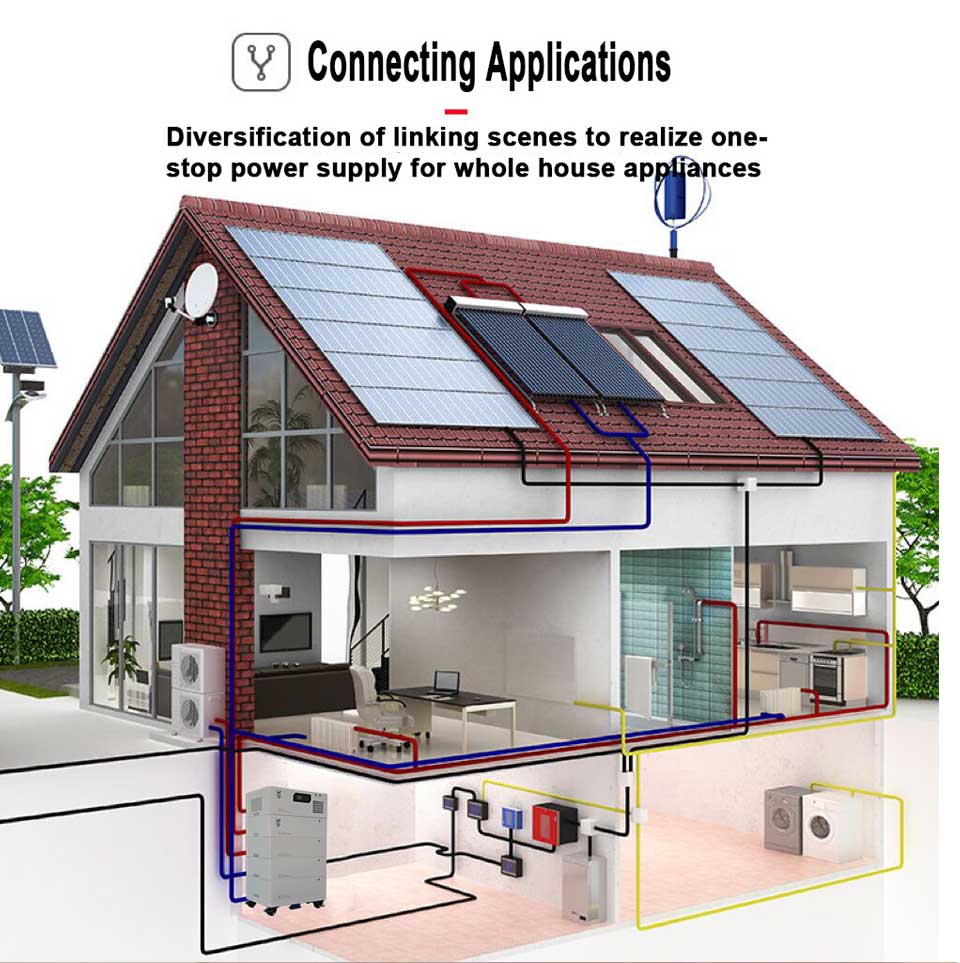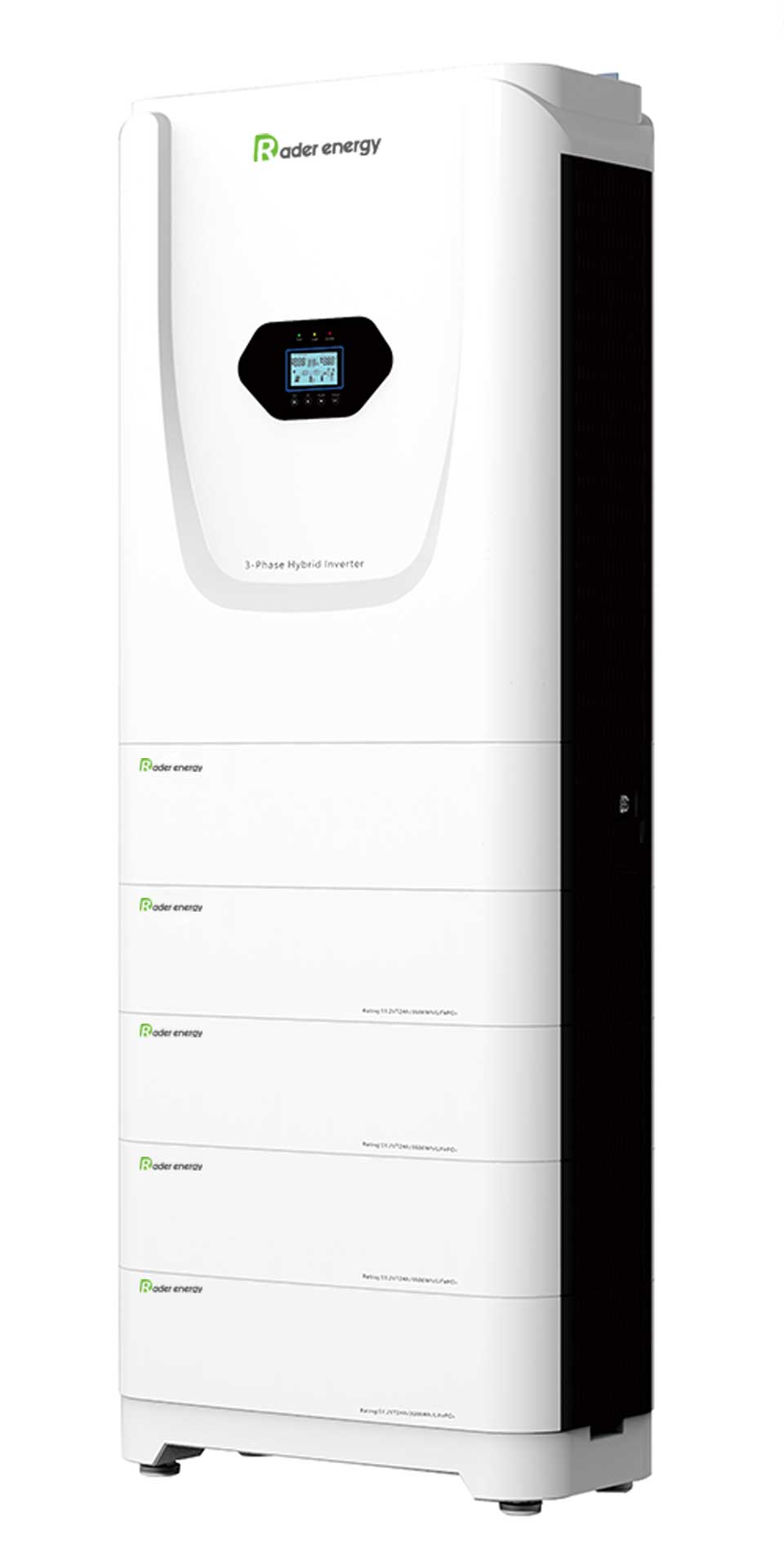Residential energy storage systems are a critical component of distributed energy resources, driving a paradigm shift in power systems from centralized power supply towards a hybrid model that integrates both centralized and decentralized energy provision. The continuous expansion of centralized, variable renewable energy installations and increasing electricity demand have given rise to issues such as power shortages, degraded power quality, and elevated electricity prices. Distributed energy generation offers the potential to cut transmission and distribution costs, achieving lower overall costs, improved power quality, and enhanced energy efficiency. For households, residential storage systems can reduce electricity costs and serve as emergency backup power, boosting the reliability of household power supply. For the grid, the incorporation of storage facilitates temporal power shifting, aiding in balancing generation capacity with consumption demands.
The drivers for residential storage markets vary across countries, with economic viability and power supply reliability emerging as the central motivators. In 2021, the global installed capacity for residential storage reached approximately 6.6 GWh, representing a 46% increase year-over-year, with Germany, the United States, Japan, and Australia standing out as the major markets. Analyzing the drivers in these four countries, economic incentives and power supply reliability prove to be the core forces: most of these countries offer subsidies targeted at residential storage systems to directly lower their installation costs. Innovative business models, such as virtual power plants (VPPs), have been introduced in areas like Australia and California, enhancing the economic attractiveness of residential storage. In Germany and Australia, the high electricity prices have spurred rapid growth in residential photovoltaic-storage systems. Our analysis indicates payback periods for residential storage systems in Germany, the U.S., Japan, and Australia to be approximately 7.6, 15.5, 8.3, and 10.3 years, respectively, suggesting that Germany, Japan, and Australia have achieved preliminary economic feasibility. Additionally, regions such as Japan and parts of the United States, which experience frequent extreme weather events, have seen increased demand for residential storage systems as households seek to improve their power supply reliability.
The global market for residential storage presents vast untapped potential, with the retail and VPP segments poised for accelerated growth. Our estimations suggest that the theoretical global capacity for residential storage is around 1300 GWh, whereas by the end of 2021, the cumulative installed capacity was just around 20 GWh, indicating a massive potential for expansion. We posit that factors such as widened peak-to-off-peak price differentials, declining storage costs, and the expiration of Feed-in Tariffs (FITs) will collectively contribute to further improvements in the economic feasibility of residential storage systems. Furthermore, should the VPP model mature, it would open up additional revenue streams for residential storage. Under a baseline scenario and an accelerated VPP development scenario, we forecast that the global installed capacity for residential storage will reach 18 GWh and 35 GWh by 2025, respectively, corresponding to Compound Annual Growth Rates (CAGRs) of 29% and 52% over the 2021-2025 period. This outlook underscores the substantial growth opportunities that await the residential storage sector in the coming years.
In summary, residential energy storage systems play a pivotal role in transitioning towards a more resilient, efficient, and sustainable power grid. With growing global recognition of their benefits, coupled with supportive policies and technological advancements, the residential storage market is poised for exponential growth, contributing significantly to the broader transition towards a cleaner and more distributed energy future.

A residential energy storage system, in layman's terms, is akin to a supersized power bank that allows homeowners to stash away electricity. Specifically, it enables the storage of power generated from renewable sources such as solar panels or wind turbines, or to accumulate electricity from the grid during off-peak hours when rates are lower.
1. Emission Reduction: Home energy storage systems enable the storage of excess electricity in batteries. This not only diminishes the reliance on the power grid but also reduces the consumption of traditional energy sources such as coal, contributing to lower carbon emissions.
2. Self-Sufficiency: Such systems empower homes to become self-reliant, breaking free from total dependence on grid-supplied electricity, thereby enhancing household energy independence.
3. Electricity Bill Savings: By purchasing electricity during off-peak hours and utilizing stored power from batteries during peak hours, families can maximize savings on their electricity bills.
4. Emergency Backup: In the event of a power outage, home energy storage systems can provide backup power, ensuring the continuity of essential electrical needs.
for Example of 14KWH Battery storage as Following
the size is about L64*W33*H100(CM)

Primarily determined by your battery's capacity, much like how the capacity of your power bank dictates how many times it can charge an iPhone, the general rule of thumb is that a battery averages around 10kWh in capacity. During a blackout, a fully charged 10kWh battery should ideally power your home for about 24 hours. However, it's not advisable to completely drain the battery's entire capacity. Maintaining a residual charge of 5%-10% ensures the battery remains healthy and has sufficient energy for startup in the morning. To determine your needs, divide your monthly electricity consumption by 30 days to ascertain your average daily usage. Equipping a battery with a capacity slightly larger than your daily consumption would be a sensible approach.
As previously mentioned, one can calculate their daily electricity consumption by dividing their monthly usage by 30. This figure will give you the number of kilowatt-hours used per day. You should then consider installing a battery with a capacity slightly larger than this value, multiplied by the number of days you wish to have backup power for. Naturally, your budget plays a crucial role in this decision; lithium-ion batteries, while effective, tend to come at a higher cost.
Indeed, it's not 10 kilowatts, but rather 10 kilowatt-hours (10 units of electricity), which seems to be a miscommunication on units, though it doesn't detract from the essence of your point. Typically, our factory price for a 10 kilowatt-hour unit is significantly lower—around one third to one quarter less—than what you'd find at retail level. As a manufacturer, our ex-factory price hovers around $1,000 to $1,500. If you're a wholesaler, you'll need to factor in additional costs such as freight, import duties, operational overheads, and installation expenses into your final pricing, encompassing all relevant variables.
Choosing between single-phase and three-phase po
"Revolutionizing energy storage, advancements in
Here is an introduction to one of the best batte
Contact: Thomas
Phone: +8618025306280
Tel: +86-0755-32872175
Email: hello@raderenergy.com
Add: Block A, Ketujia Building, Fucheng Street, Longhua District, Shenzhen, PRC